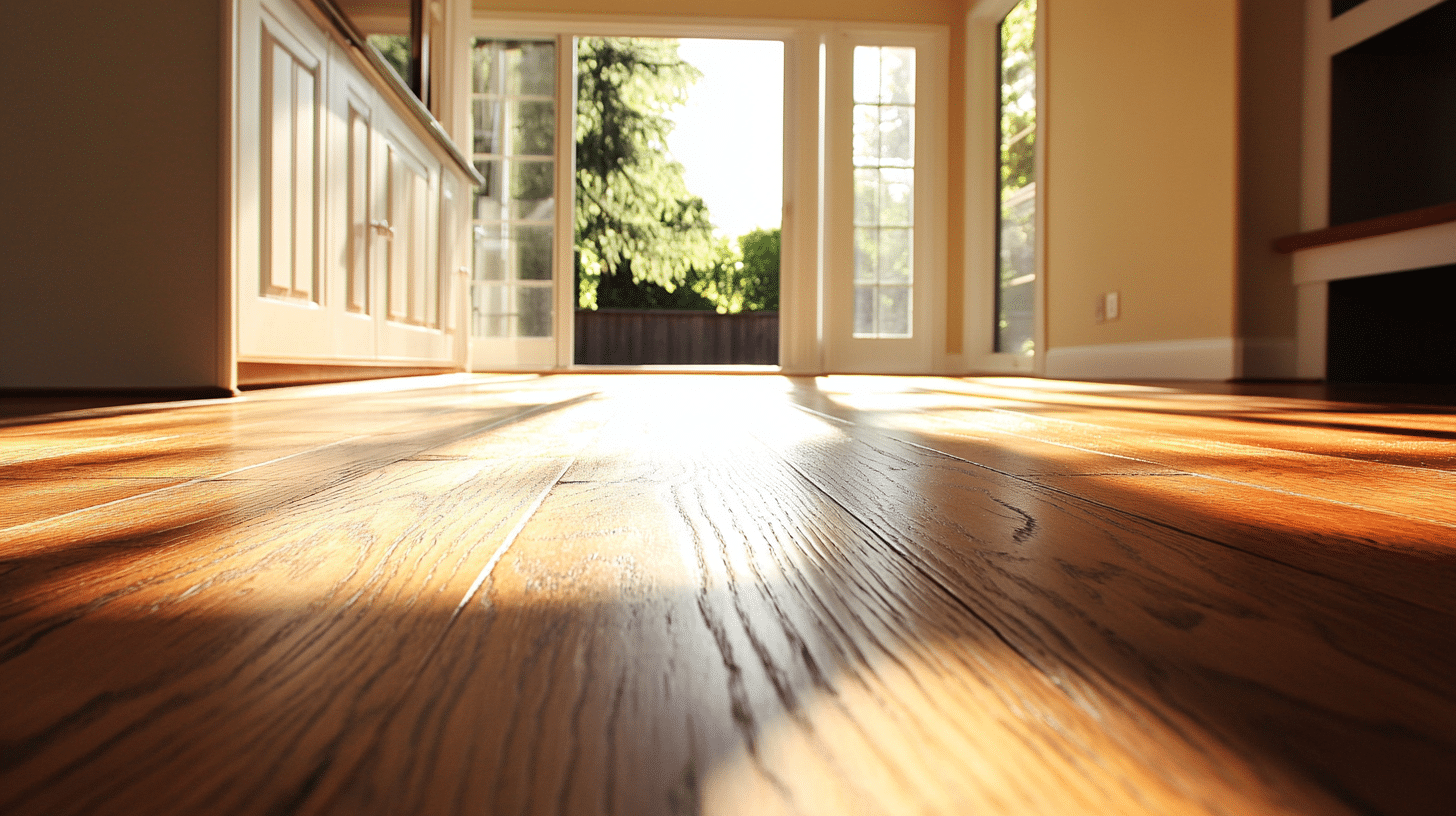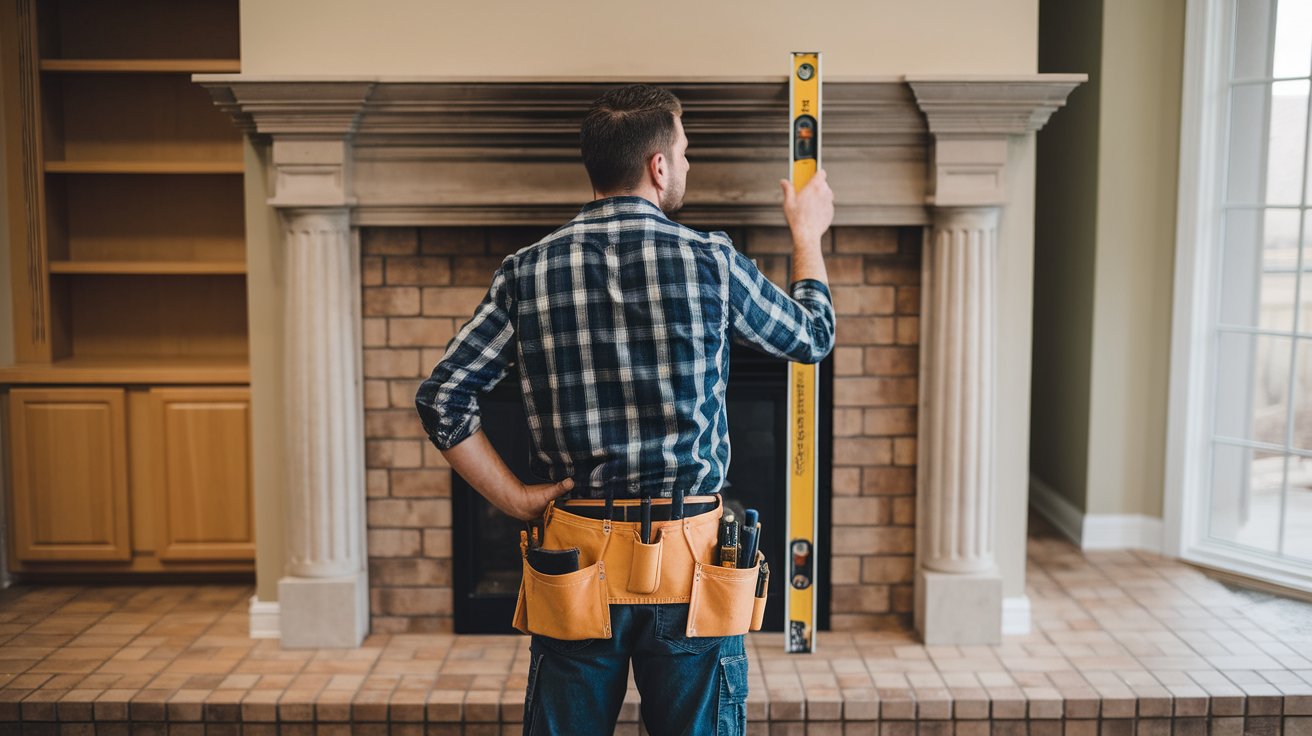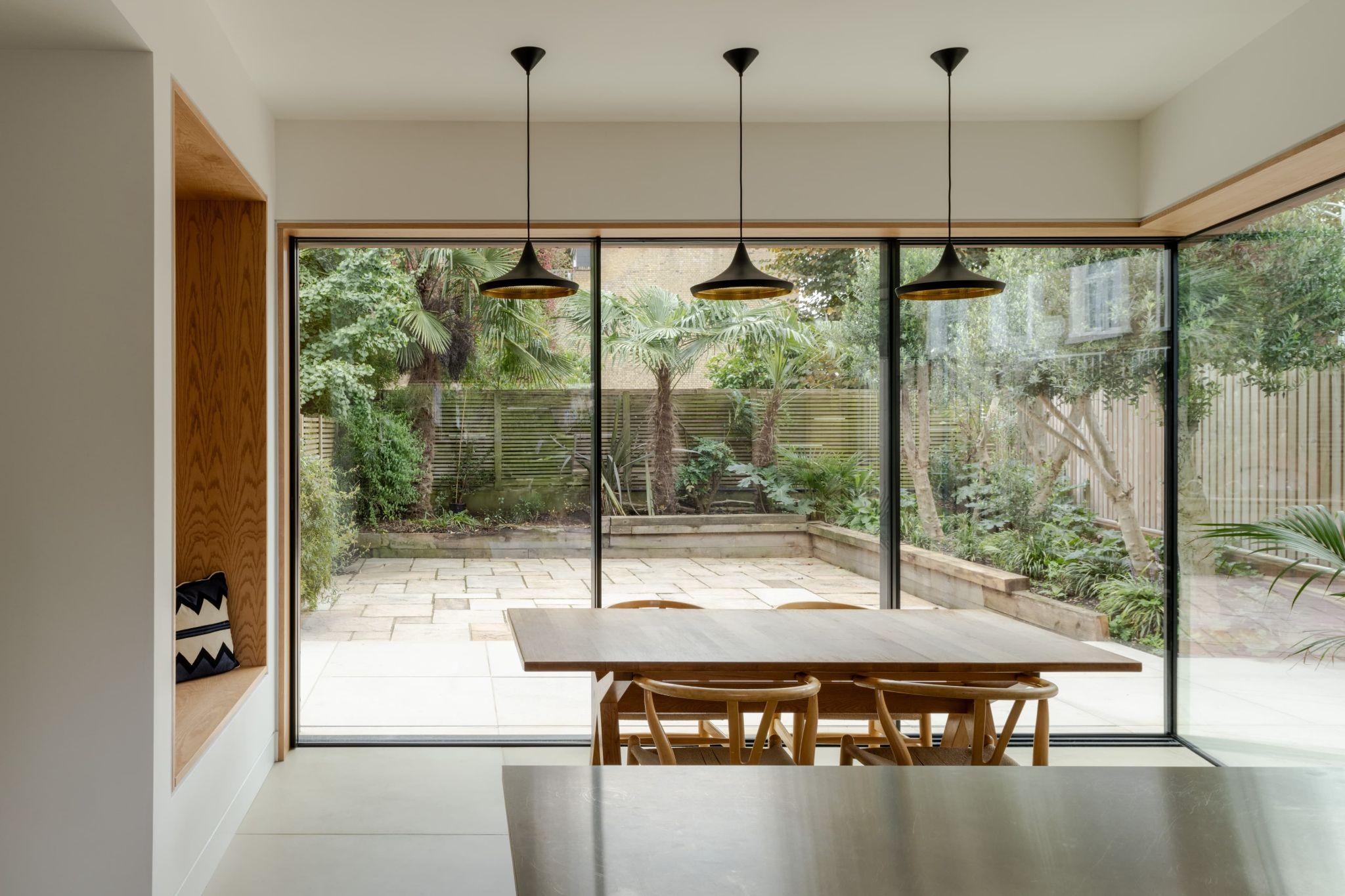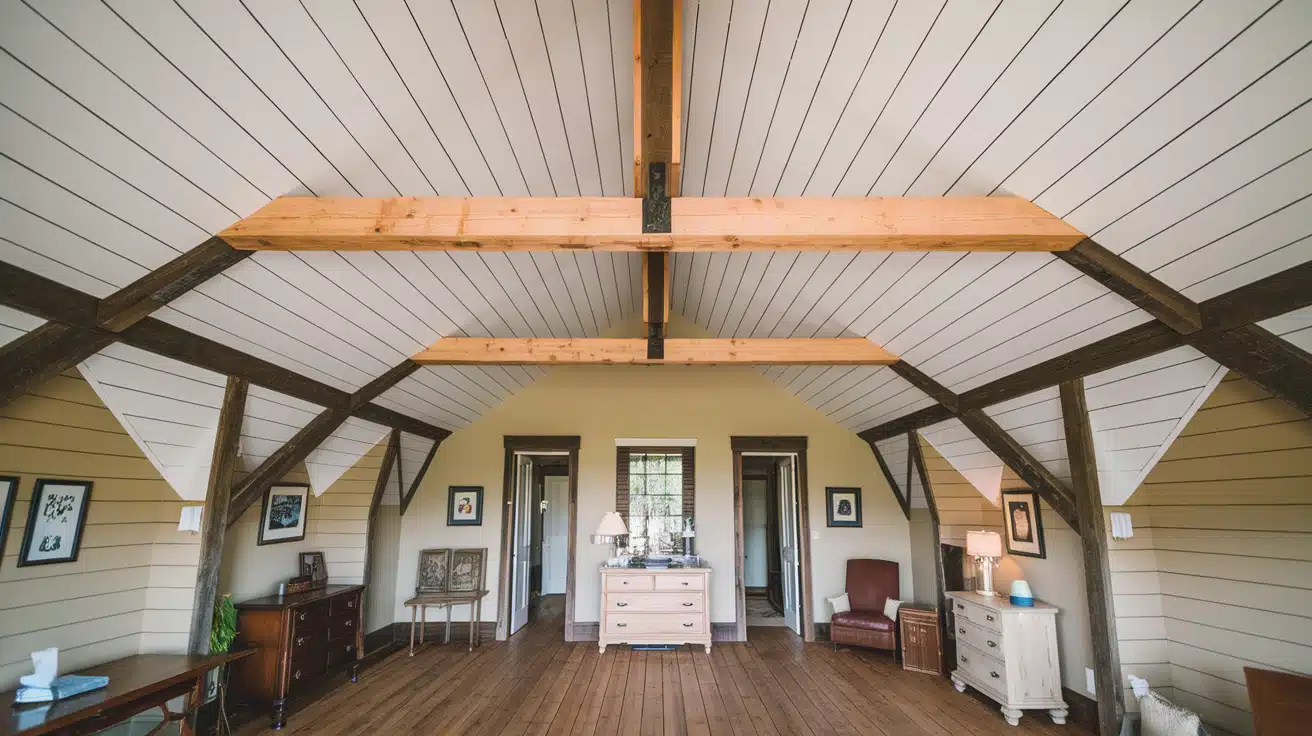15 Stunning Hardwood Floor Designs to Transform Your Home
Hardwood floors can transform a house into a home, adding warmth, character, and value.
The right design can turn an ordinary room into a stunning showcase, setting the tone for your entire living space.
Whether you’re drawn to classic elegance or modern flair, a hardwood floor design can bring your vision to life.
In this guide, we’ll explore 15 captivating hardwood floor designs that can elevate your home’s interior. From timeless patterns to unique layouts, these options cater to various tastes and styles.
We’ll dive into the characteristics of each design, helping you understand their visual impact, durability, and suitability for different spaces.
By the end, you’ll have the knowledge to choose a hardwood floor design that complements your home and reflects your personal style.
Stunning Hardwood Floor Designs for Every Style
1. Classic oak plank
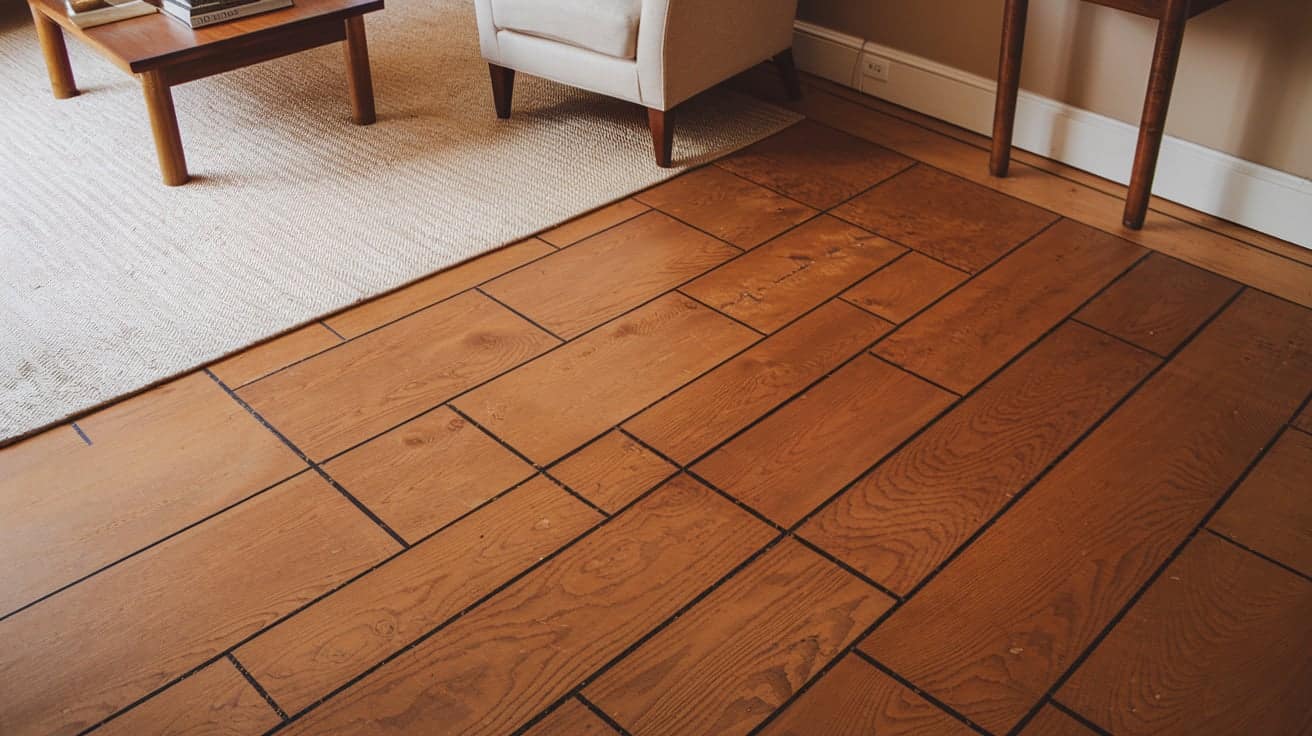
Oak plank flooring is a timeless choice, known for its durability and versatility. This design features long strips of oak wood laid in a straight pattern, creating a clean and traditional look.
- Durability: Highly resistant to wear and tear, suitable for high-traffic areas
- Ideal Locations: Versatile for most rooms, especially living rooms, dining rooms, and bedrooms
2. Herringbone pattern
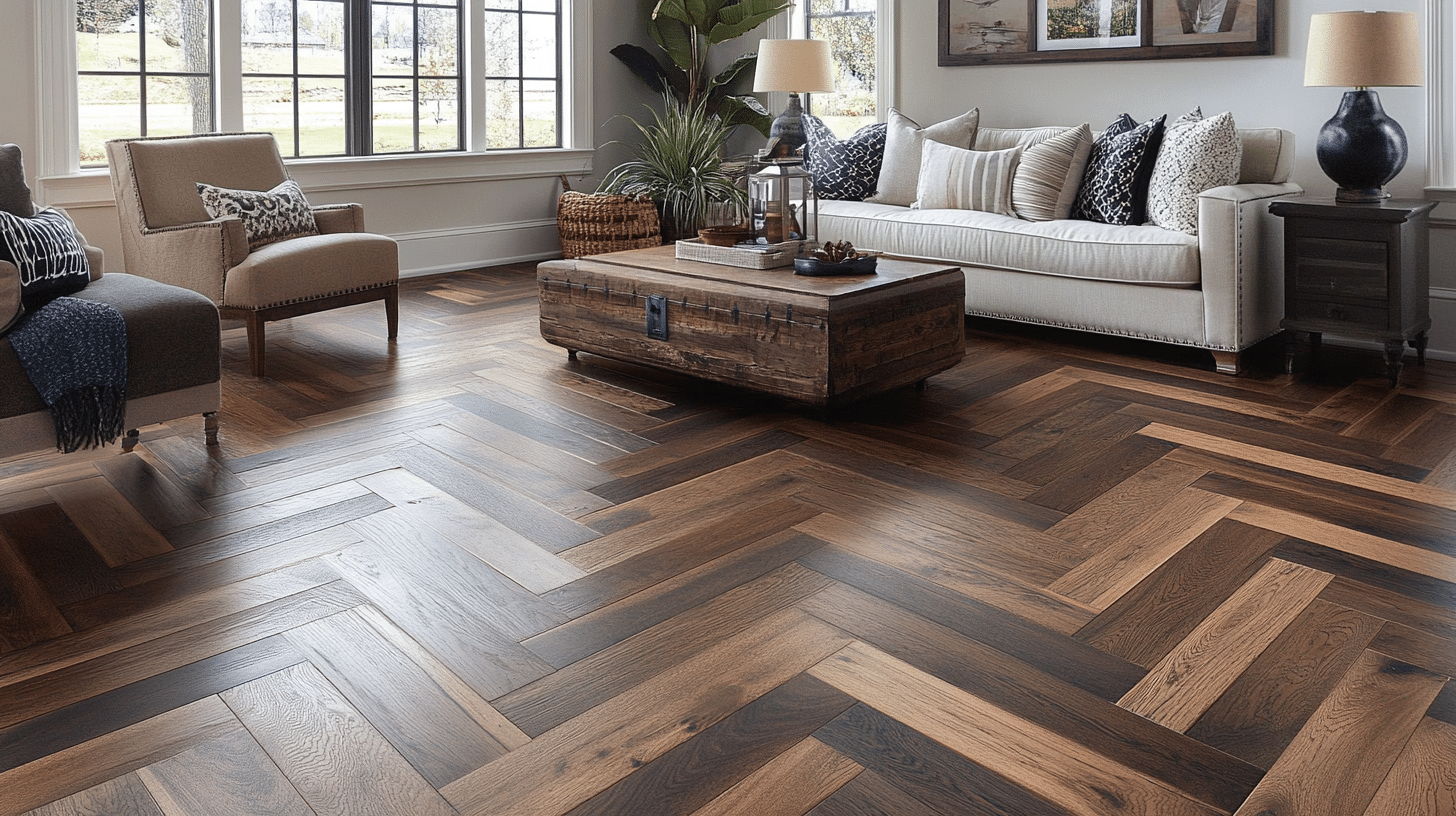
Herringbone flooring arranges rectangular wood pieces in a zigzag pattern, creating a visually striking and sophisticated look. This design adds depth and interest to any room.
- Durability: Depends on the wood type used, generally good wear resistance
- Ideal Locations: Formal living rooms, entryways, or as an accent in larger spaces
3. Wide plank walnut
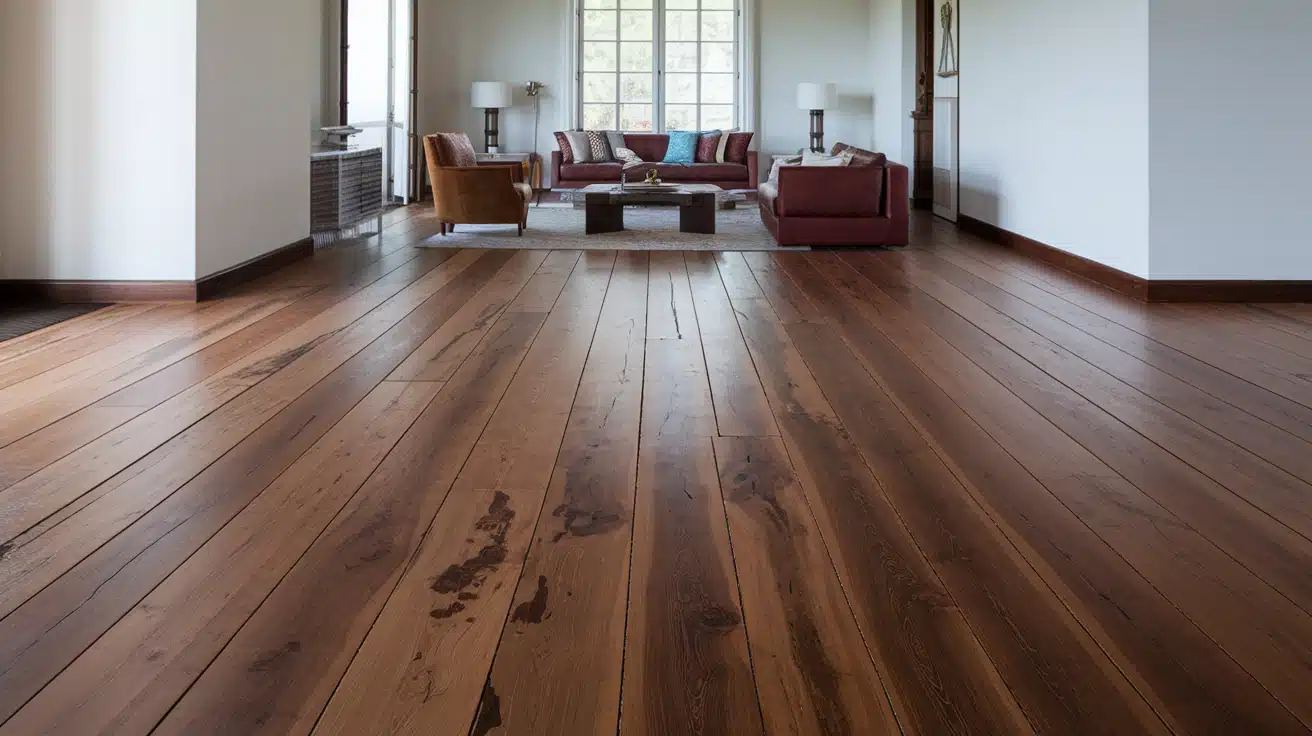
Wide plank walnut flooring uses broader boards, showcasing walnut wood’s rich color and unique grain patterns. This design creates a sense of spaciousness and luxury.
- Durability: Moderately hard, may show wear in high-traffic areas
- Ideal Locations: Formal dining rooms, studies, or master bedrooms for a luxurious feel
4. Reclaimed barn wood
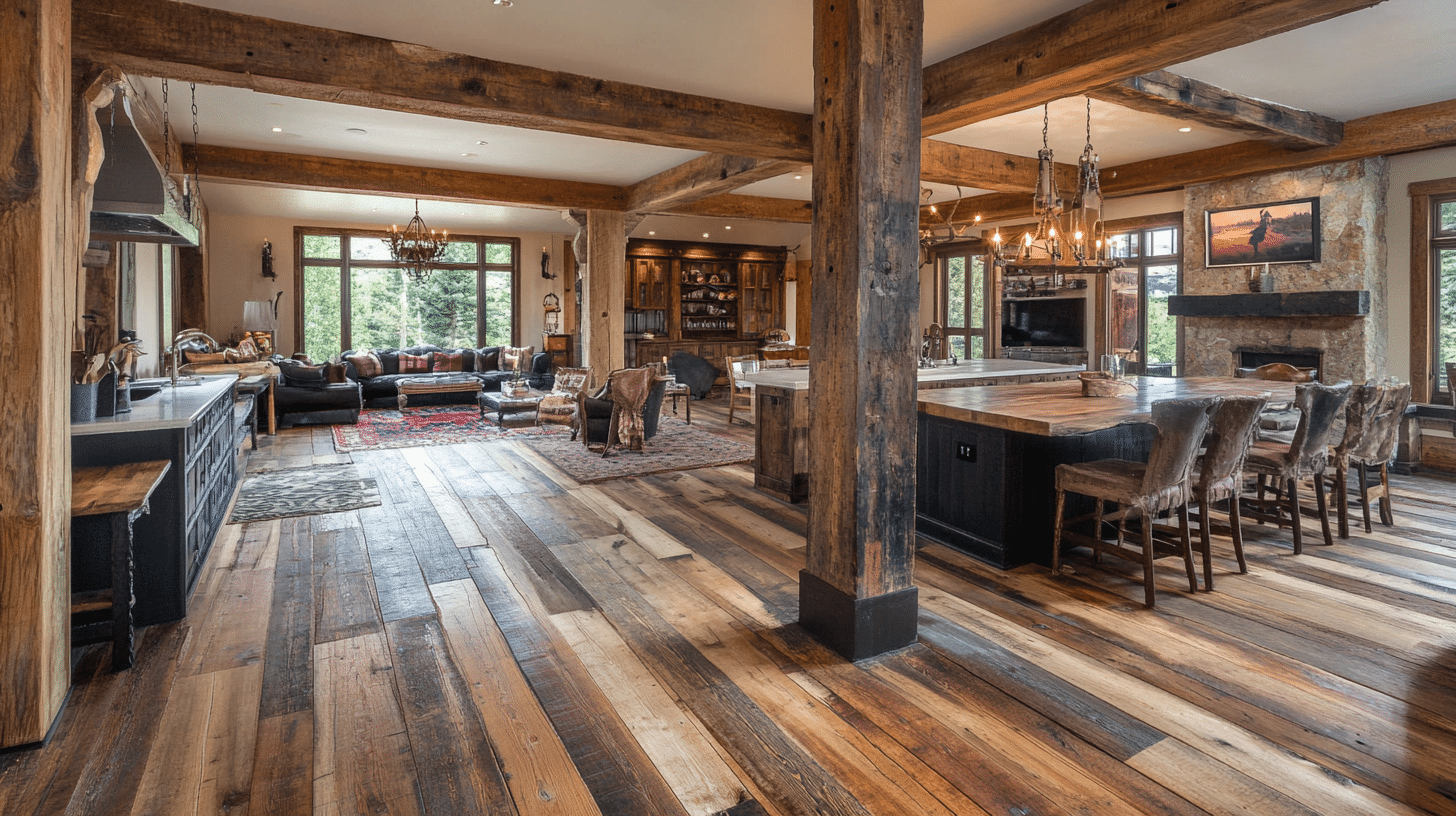
Reclaimed barn wood flooring uses salvaged timber from old structures, offering a rustic and eco-friendly option. Each plank, with its unique character and patina, tells a story.
- Durability: Often very hard due to age, but may have existing imperfections
- Ideal Locations: Rustic homes, country-style kitchens, or cozy living rooms
5. Mixed-width maple strips
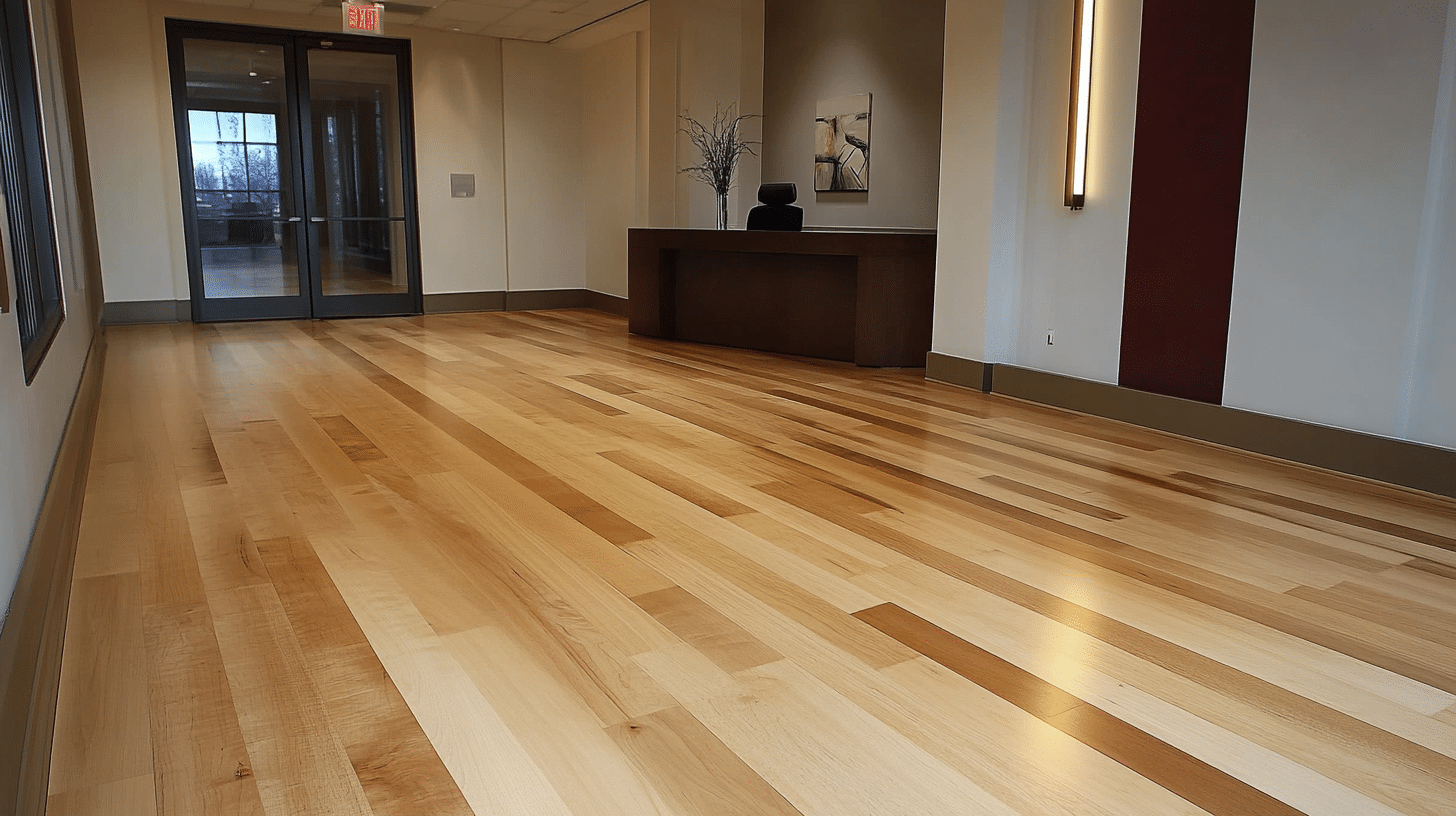
This design combines maple wood strips of varying widths, creating a unique and visually interesting floor. Maple’s light color adds brightness to spaces.
- Durability: Very hard and resistant to wear
- Ideal Locations: Kitchens, home offices, or playrooms where a bright, clean look is desired
6. Parquet squares
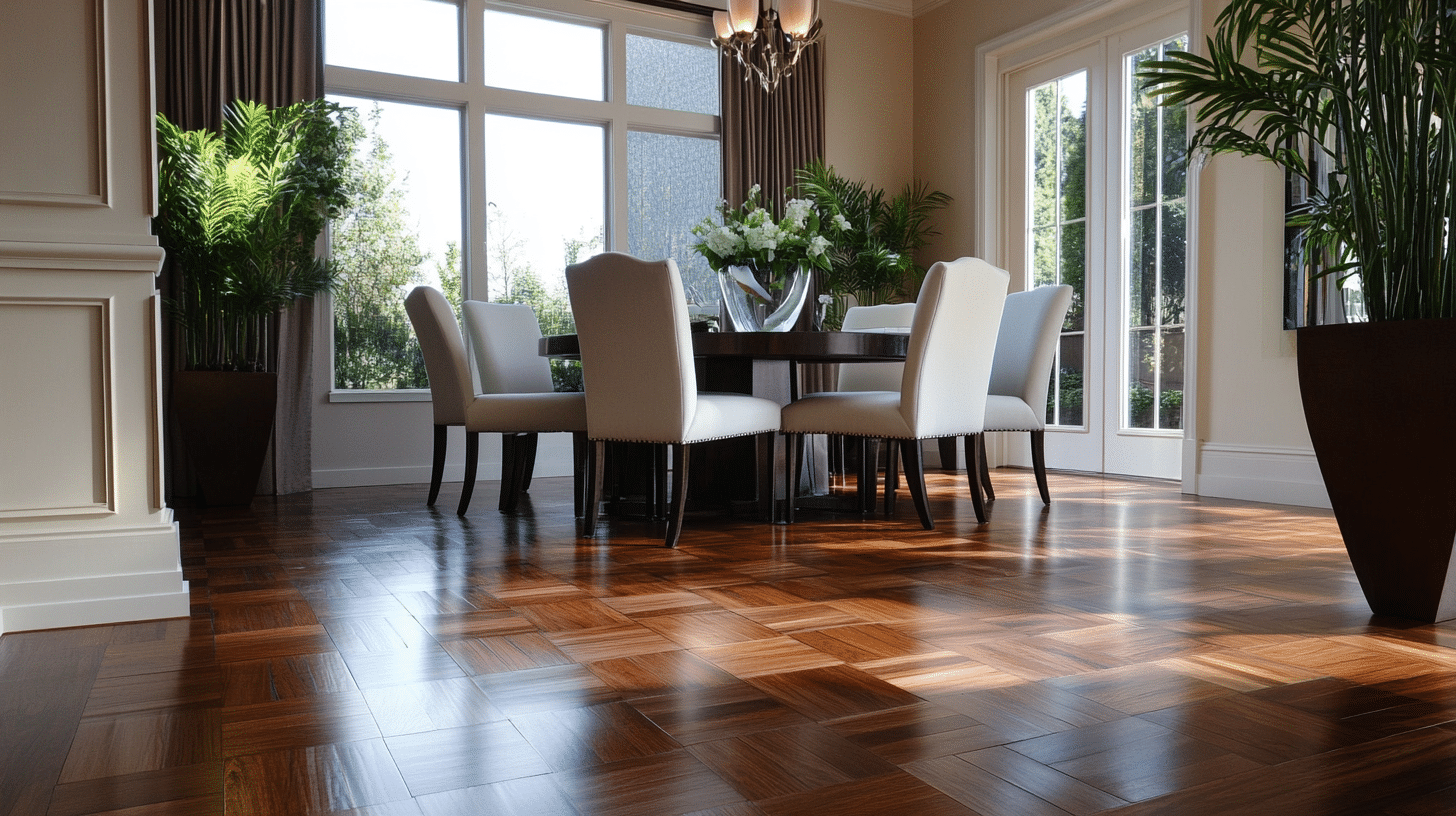
Parquet flooring consists of small wood pieces arranged in geometric patterns, often in square sections. This design offers a classic, sophisticated look.
- Durability: Varies based on wood type and finish; generally good
- Ideal Locations: Formal dining rooms, studies, or as statement flooring in entryways
7. Chevron layout
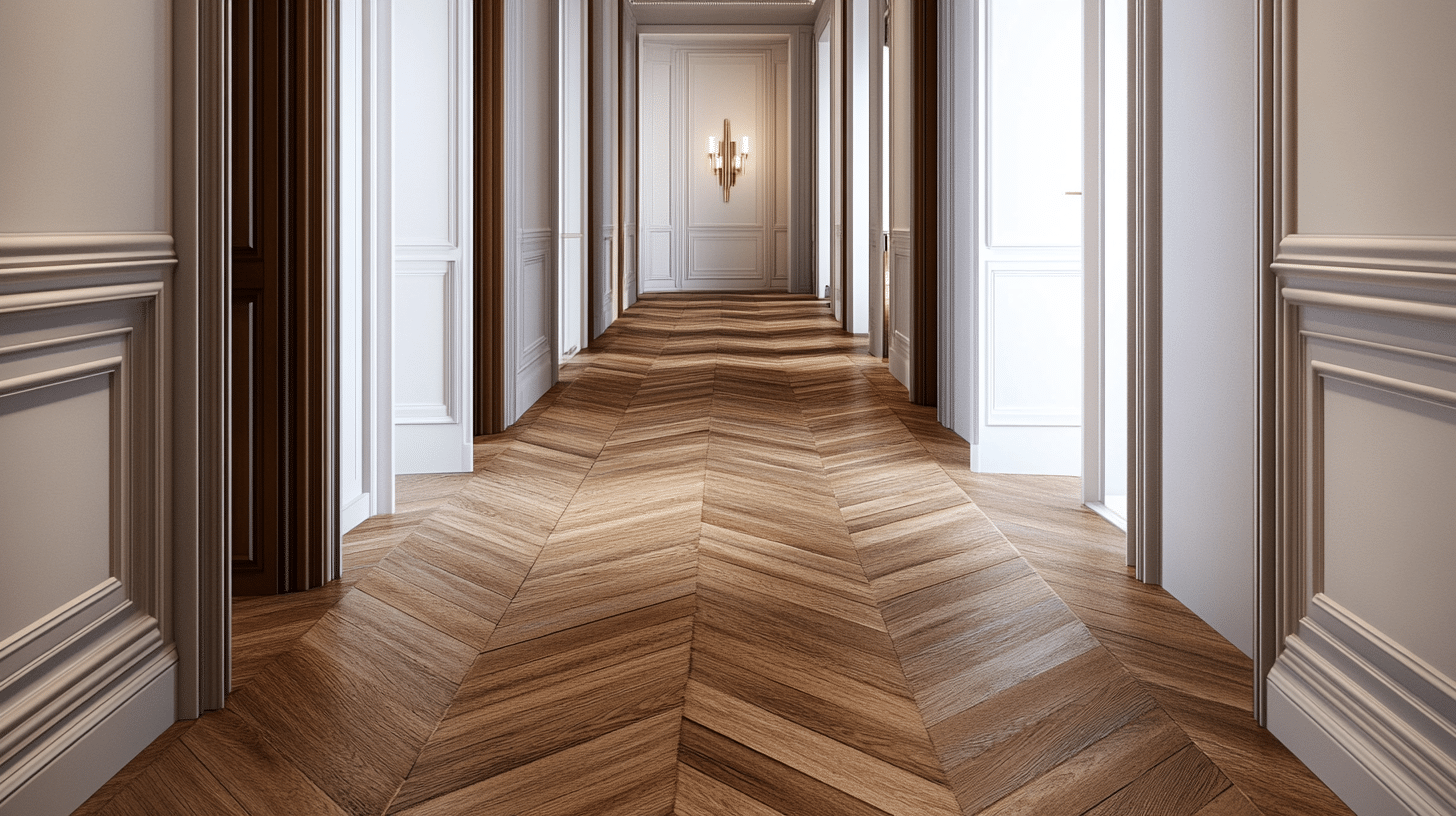
Chevron flooring features wood planks cut at an angle and arranged in a V-shape, pointing in the same direction. This design creates a sense of movement and elegance.
- Durability: Varies based on wood type, generally good longevity
- Ideal Locations: Foyers, long hallways, or open-concept living areas to create visual interest
8. Hickory with natural variations
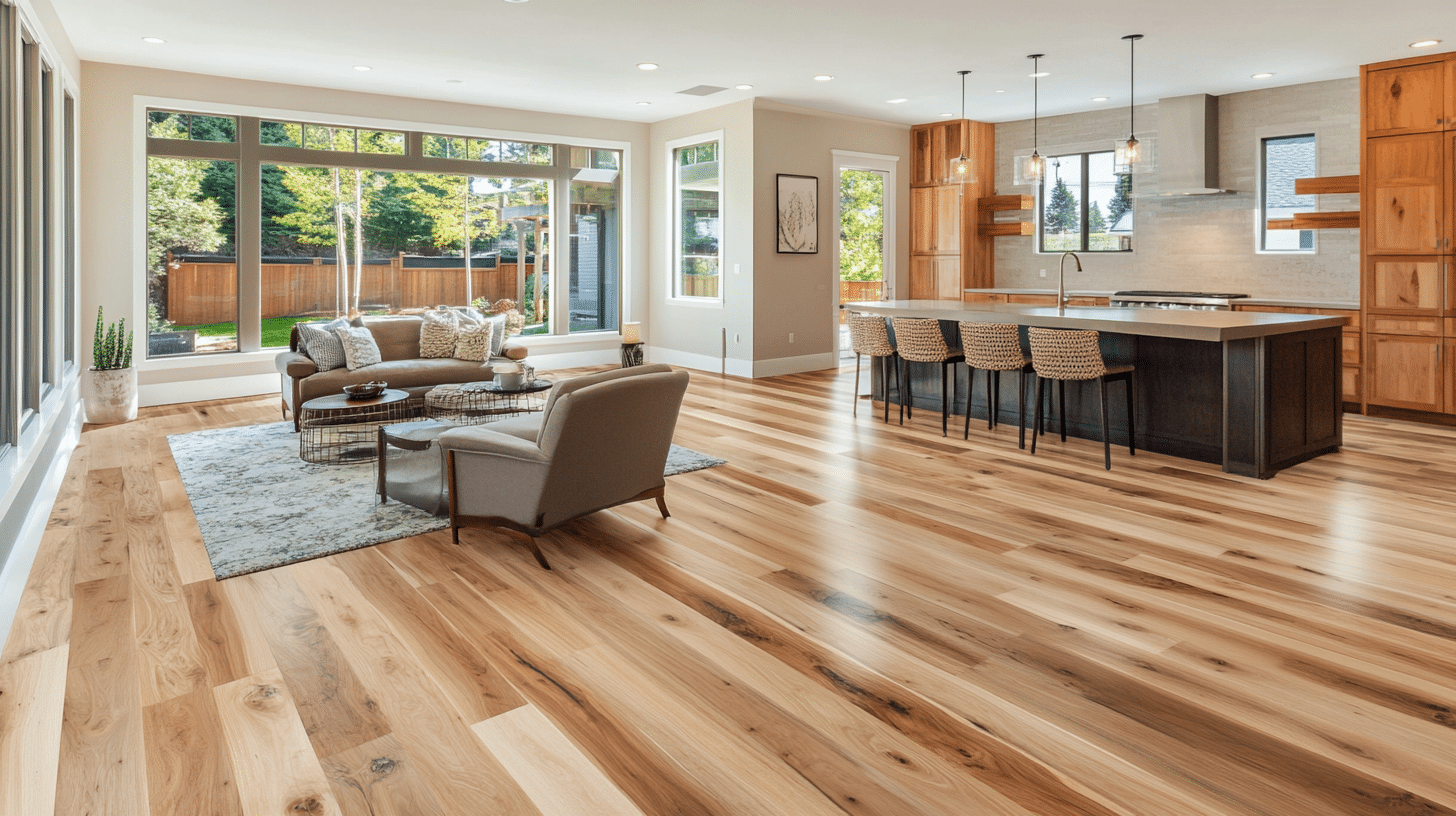
Hickory flooring showcases the wood’s natural color variations and distinctive grain patterns. It offers a rustic yet elegant look with excellent durability.
- Durability: Extremely hard and resistant to dents and wear
- Ideal Locations: High-traffic areas like hallways, family rooms, or busy kitchens
9. Basketweave design
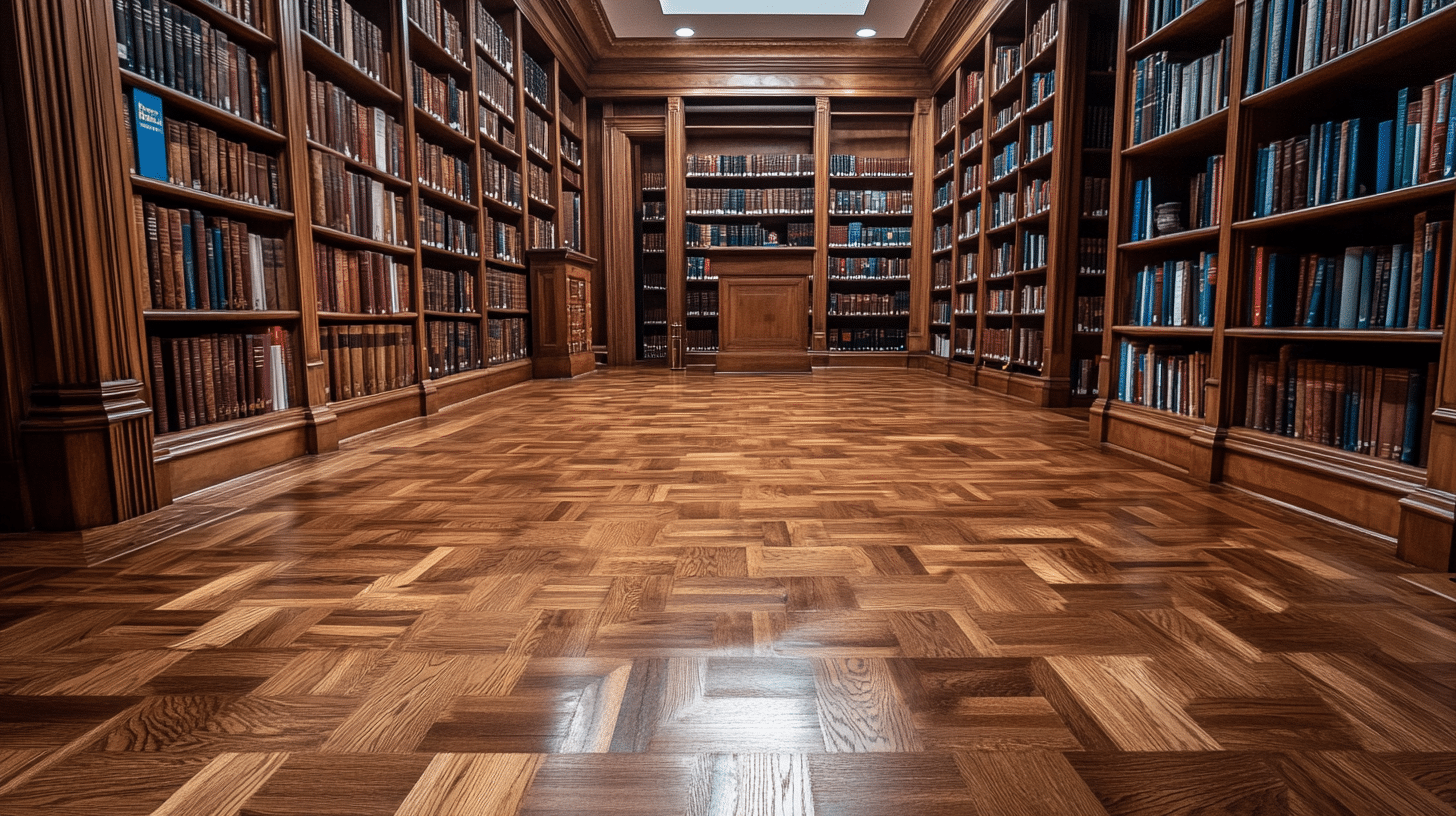
Basketweave flooring mimics the look of woven baskets, using alternating groups of parallel wood strips. This pattern adds texture and visual interest to a room.
- Durability: Depends on wood type, generally good wear resistance
- Ideal Locations: Formal living rooms, libraries, or as an accent in larger spaces
10. Cherry wood with rich tones
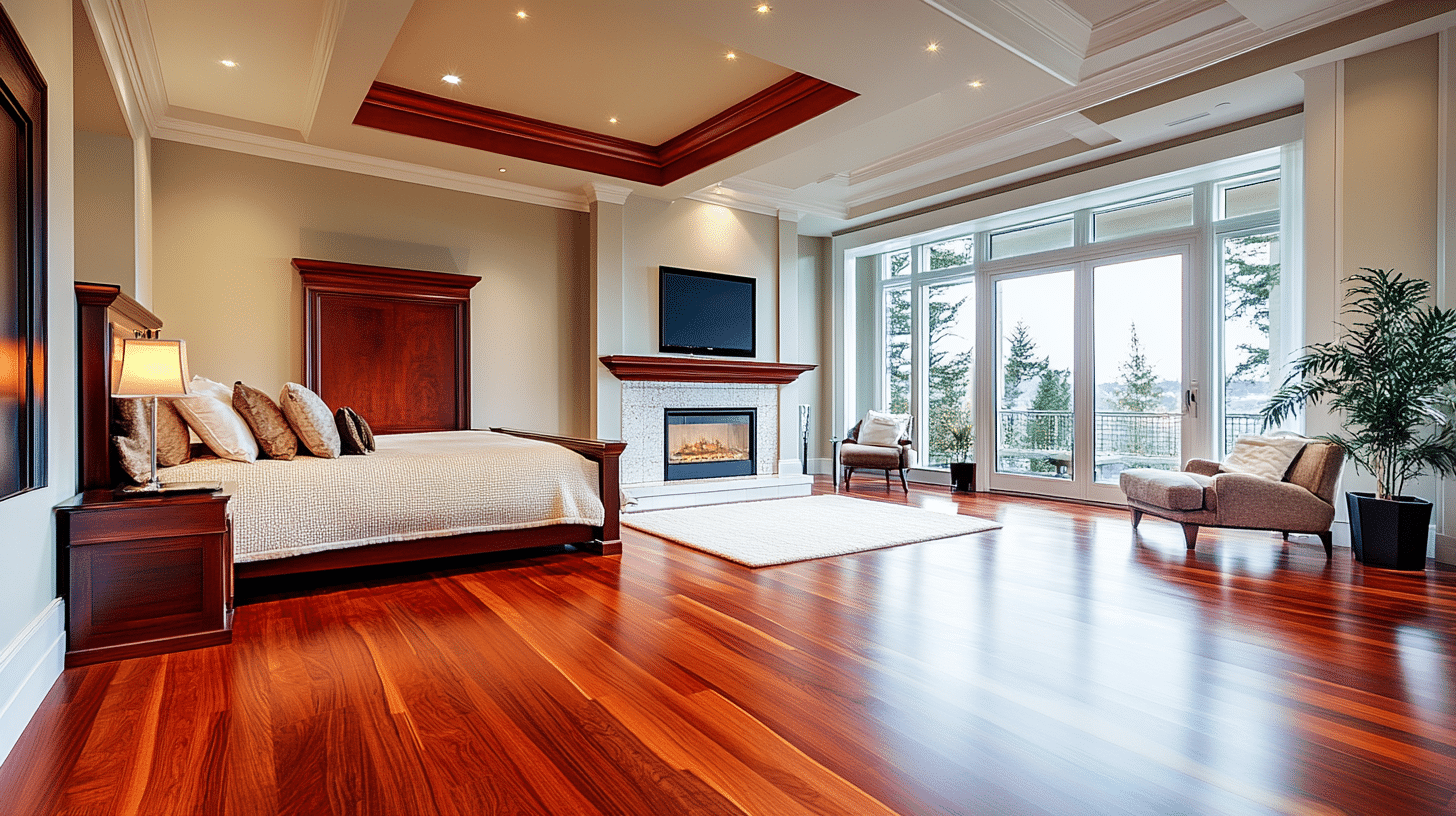
Cherry wood flooring is prized for its warm, reddish-brown hues that deepen over time. It offers a luxurious look with a smooth, fine-grain pattern.
- Durability: Moderately hard, may show wear in high-traffic areas
- Ideal Locations: Formal dining rooms, bedrooms, or home offices for a warm, inviting feel
11. Ashwood with light coloring
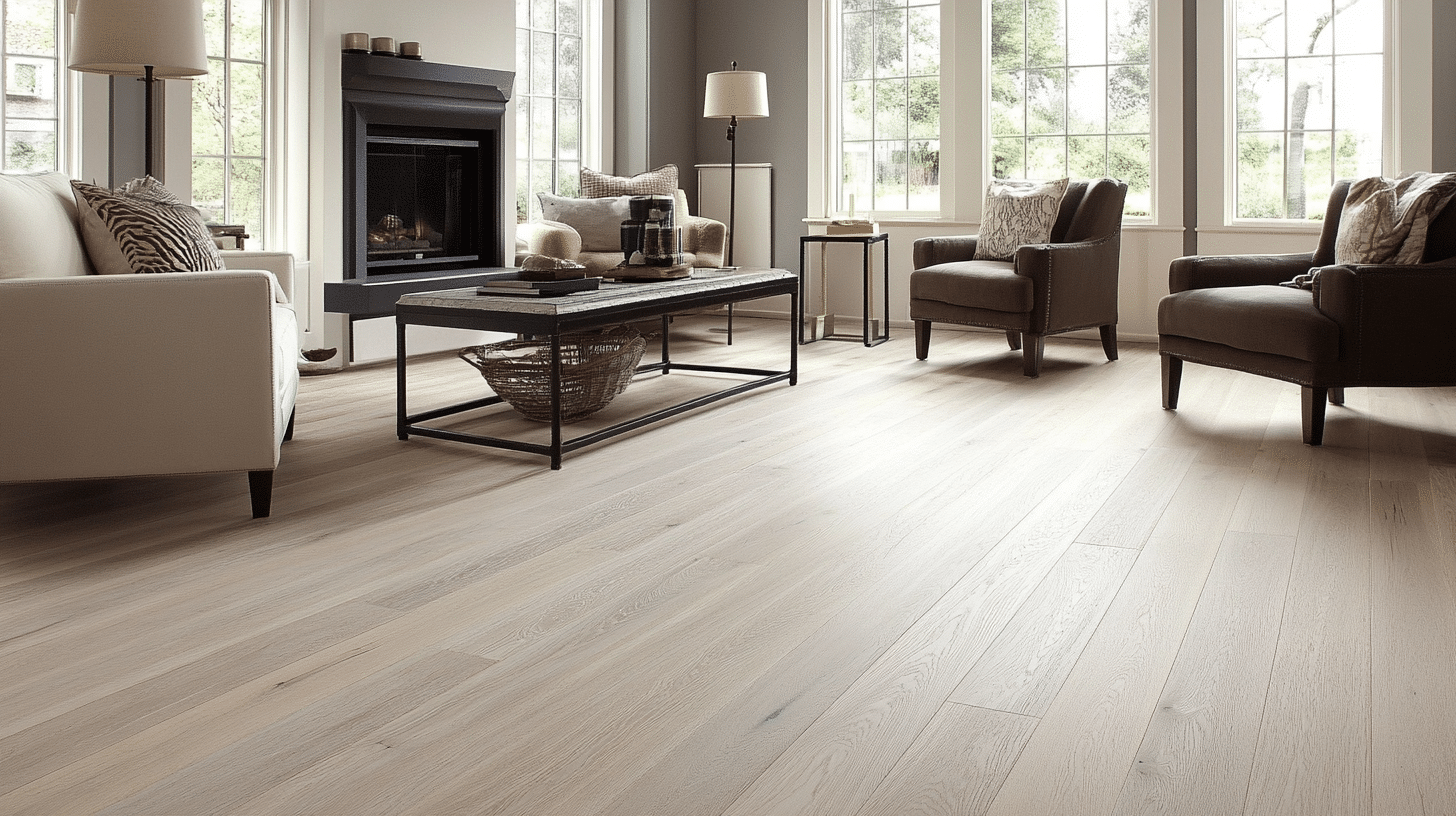
Ashwood flooring offers a light, clean look with prominent grain patterns. It’s known for its strength and flexibility, making it a practical and attractive choice.
- Durability: Hard and resilient, good resistance to dents and wear
- Ideal Locations: Bright, open spaces like living rooms or sunrooms to enhance natural light
12. End-grain wood blocks
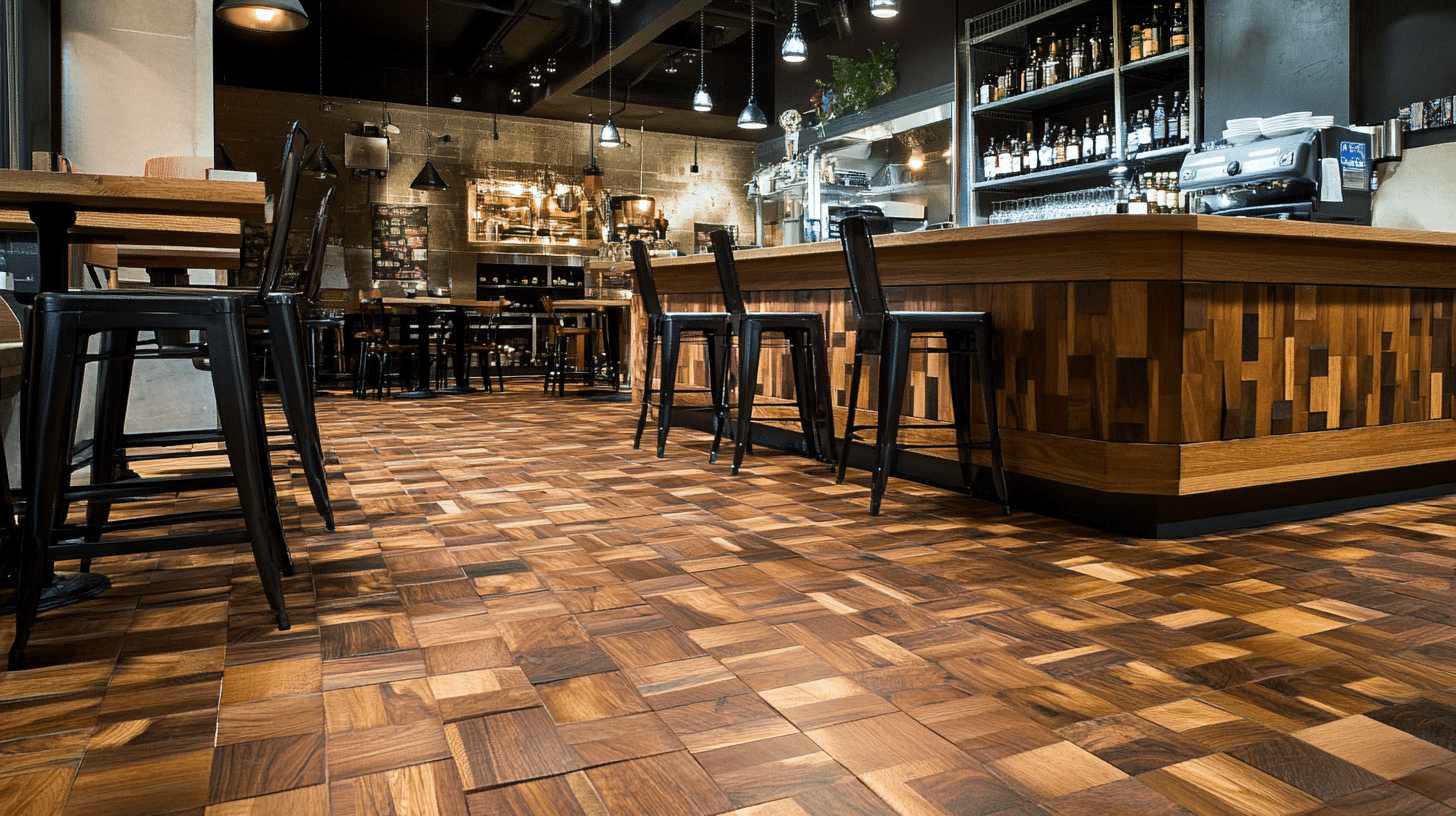
End grain flooring uses cross-sections of wood, showcasing the tree’s growth rings. This unique design offers exceptional durability and a distinctive look.
- Durability: Extremely hard-wearing, resistant to dents and scratches
- Ideal Locations: High-traffic areas like kitchens, entryways, or commercial spaces
13. Bamboo strand-woven
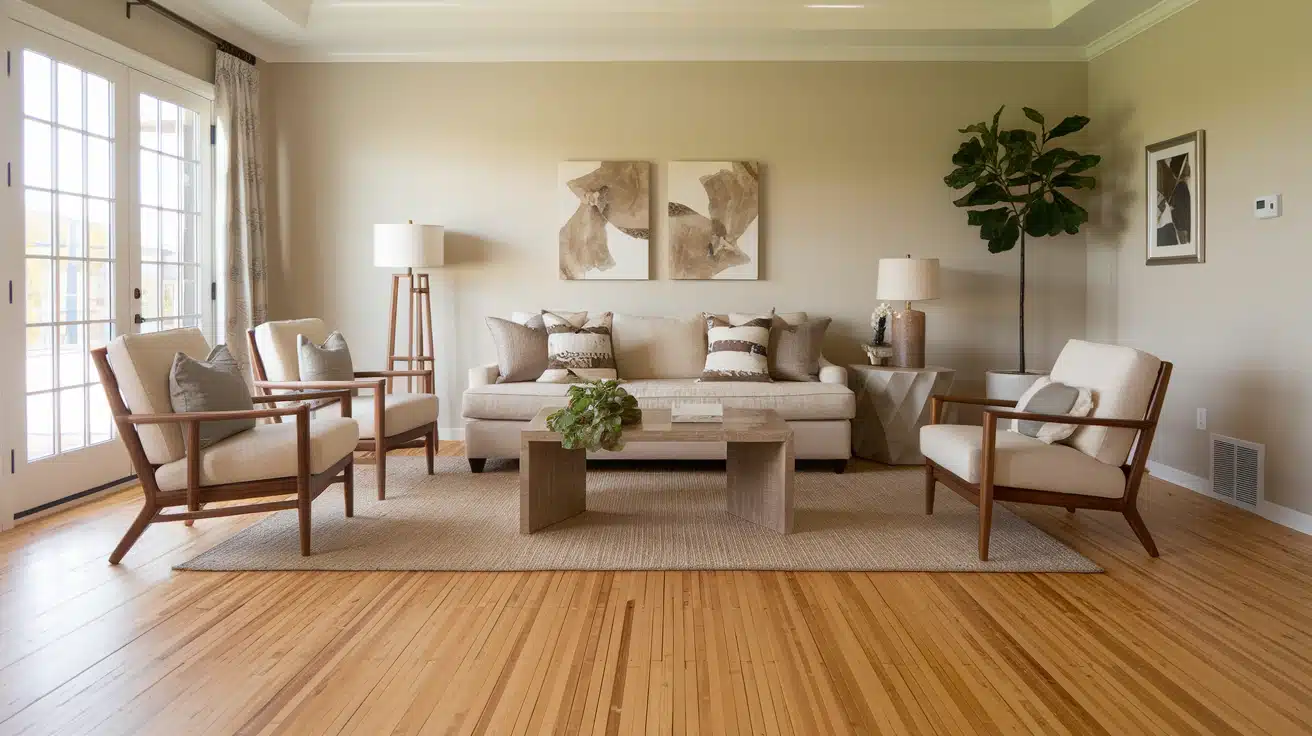
Strand-woven bamboo flooring offers an eco-friendly option with a unique look and exceptional hardness.
- Durability: Extremely hard and resistant to dents and scratches
- Ideal Locations: High-traffic areas like hallways, family rooms, or eco-conscious home offices
14. Mahogany with straight grain
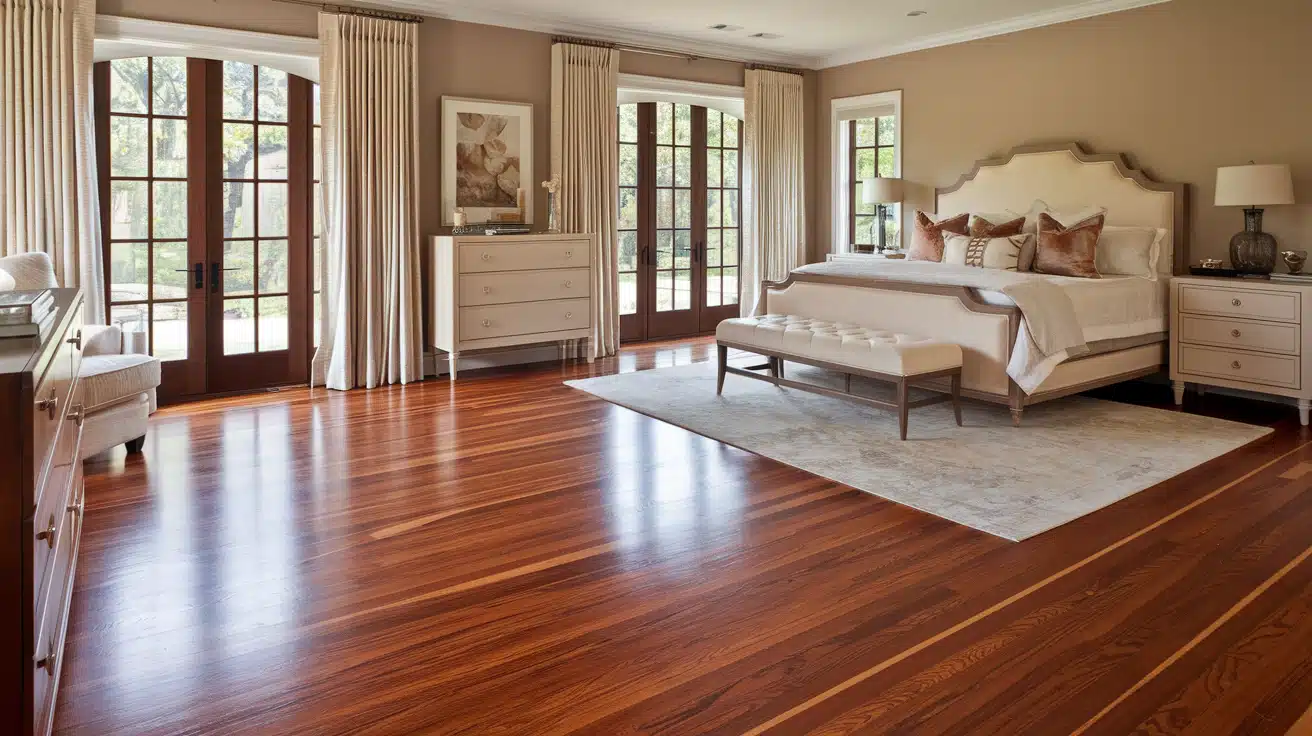
Mahogany flooring is known for its rich, reddish-brown color and straight, fine grain. It offers a classic, high-end look that ages beautifully.
- Durability: Moderately hard, resistant to decay and insects
- Ideal Locations: Formal living rooms, master bedrooms, or home theaters for a luxurious feel
15. Distressed pine
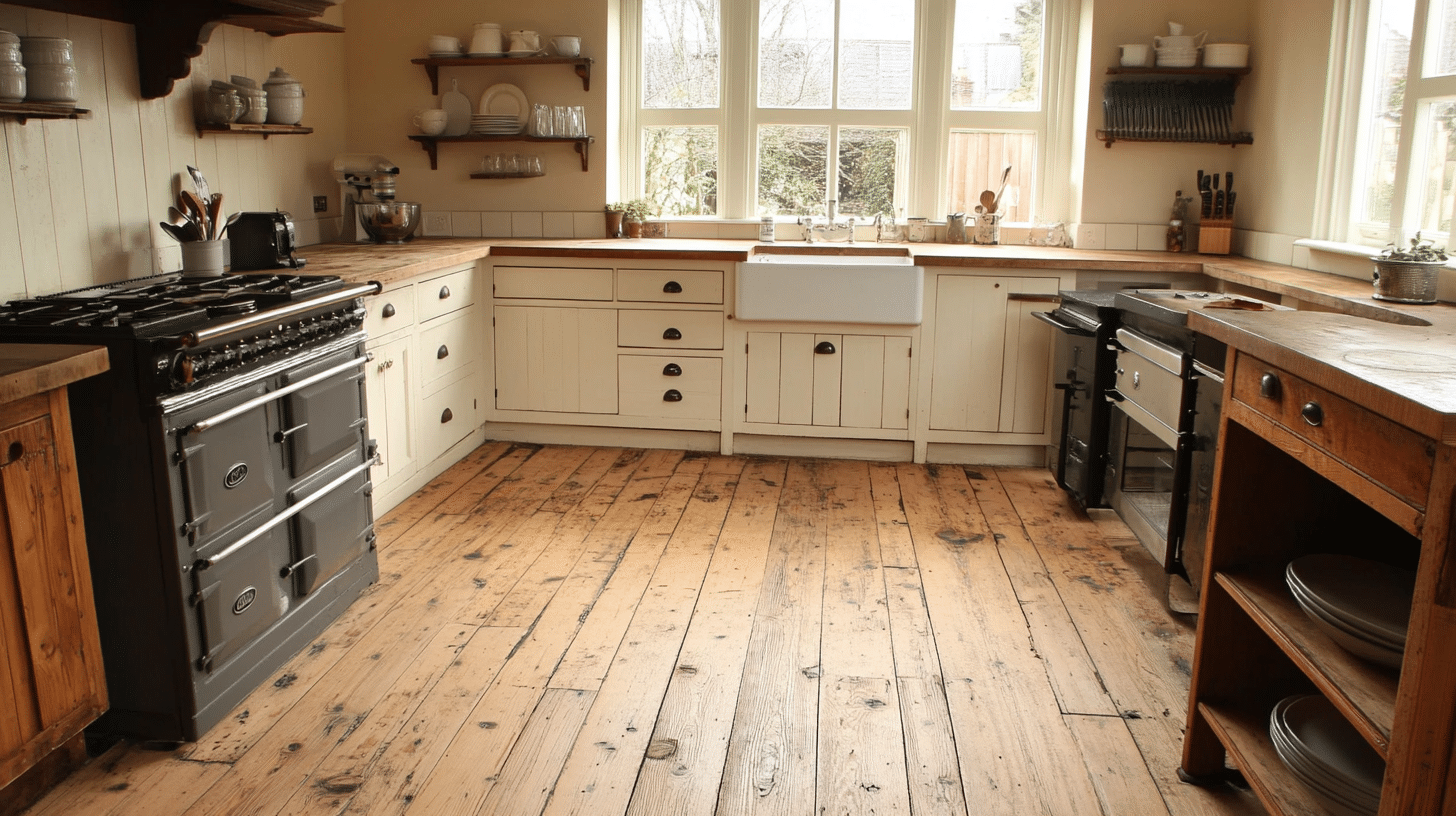
Distressed pine flooring offers a rustic, lived-in look with intentional wear marks and imperfections. This design adds character and warmth to any space.
- Durability: Softer wood, but wear adds to the rustic charm
- Ideal Locations: Country-style kitchens, rustic living rooms, or vacation homes
Hardwood Flooring Cost Comparison
Here’s the cost table for each hardwood floor design:
| Design | Material Cost (per sq ft) | Installation Cost (per sq ft) | Total Cost Range (per sq ft) |
|---|---|---|---|
| Classic oak plank | $3 – $10 | $3 – $8 | $6 – $18 |
| Herringbone pattern | $8 – $20 | $8 – $16 | $16 – $36 |
| Wide plank walnut | $10 – $25 | $4 – $10 | $14 – $35 |
| Reclaimed barn wood | $10 – $30 | $5 – $12 | $15 – $42 |
| Mixed-width maple strips | $5 – $15 | $4 – $10 | $9 – $25 |
| Parquet squares | $8 – $20 | $7 – $14 | $15 – $34 |
| Chevron layout | $8 – $20 | $8 – $16 | $16 – $36 |
| Hickory with natural variations | $6 – $18 | $4 – $10 | $10 – $28 |
| Basketweave design | $8 – $20 | $8 – $16 | $16 – $36 |
| Cherry wood with rich tones | $7 – $20 | $4 – $10 | $11 – $30 |
| Ashwood with light coloring | $5 – $12 | $4 – $10 | $9 – $22 |
| End-grain wood blocks | $12 – $30 | $8 – $15 | $20 – $45 |
| Bamboo strand-woven | $5 – $13 | $4 – $9 | $9 – $22 |
| Mahogany with straight grain | $10 – $30 | $4 – $10 | $14 – $40 |
| Distressed pine | $4 – $12 | $3 – $8 | $7 – $20 |
These are estimated ranges, and actual costs can vary based on factors such as wood quality, brand, location, installation complexity, subfloor preparation, finish options, and additional features.
It’s always best to get quotes from local suppliers and installers for the most accurate pricing in your area.
Step-by-Step Guide to Installing Hardwood Flooring
| Category | Item |
|---|---|
| Flooring Materials | Wide plank engineered hardwood flooring |
| Underlayment | |
| Staples (for securing underlayment) | |
| Adjustable shims (or custom-cut shims) | |
| Baseboards and trim (for finishing the room) | |
| Tools | Chalk Reel |
| Tape measure | |
| Cordless Jig Saw (for cutting or notching floorboards) | |
| Dremel Multi-Max (for trimming door casings) | |
| Chop Saw | |
| Safety Gear | Husky Soft Cap Gel Knee Pads |
| General Purpose Work Gloves | |
| Safety Glasses | |
| Dust Mask | |
| Hearing Protection |
Step 1: Plan and Measure
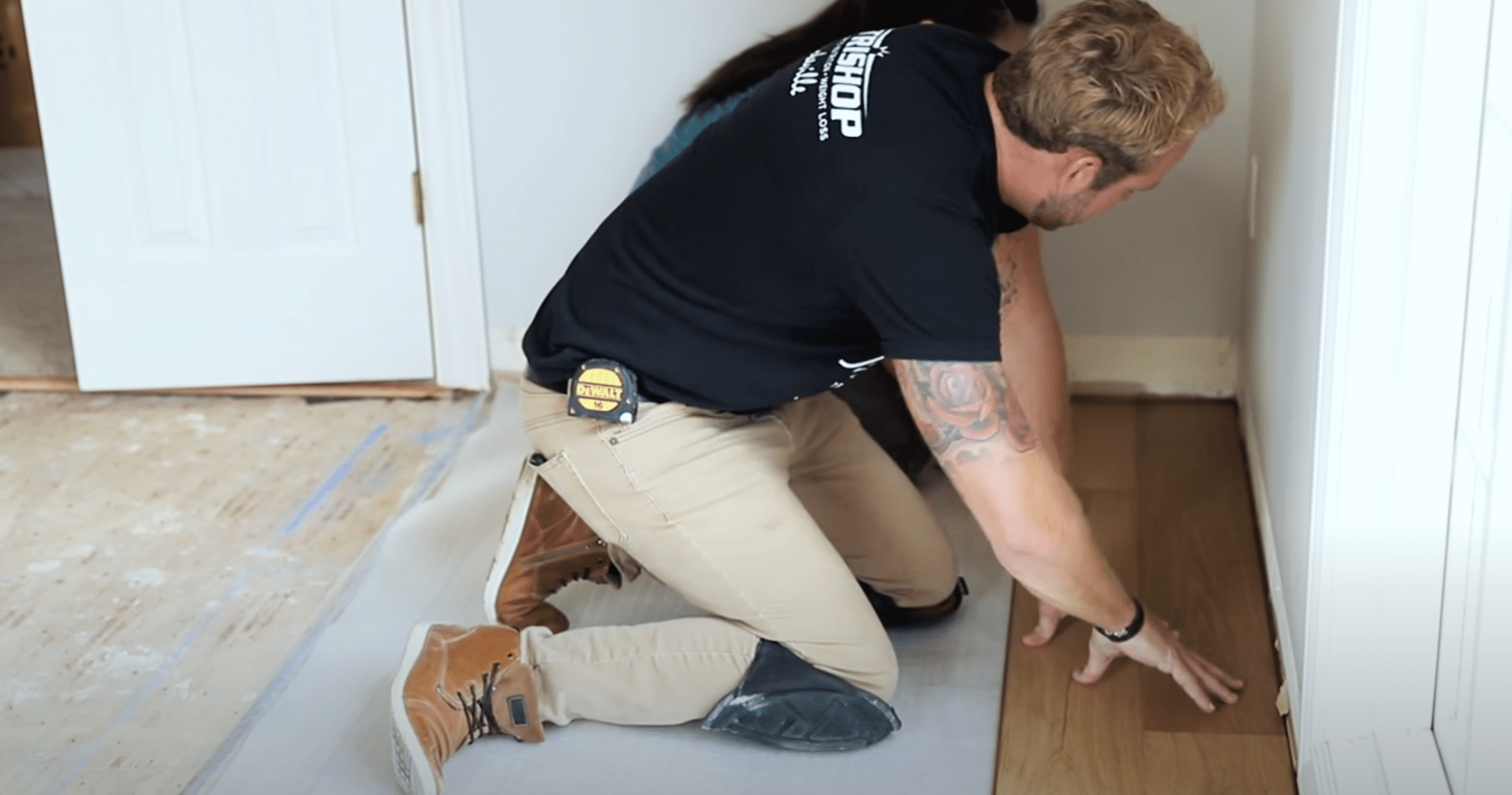
- Choose the longest, straightest wall and snap a chalk line to guide the first row.
- Measure the room to balance the width of the first and last planks where possible.
Step 2: Lay Underlayment and Shims
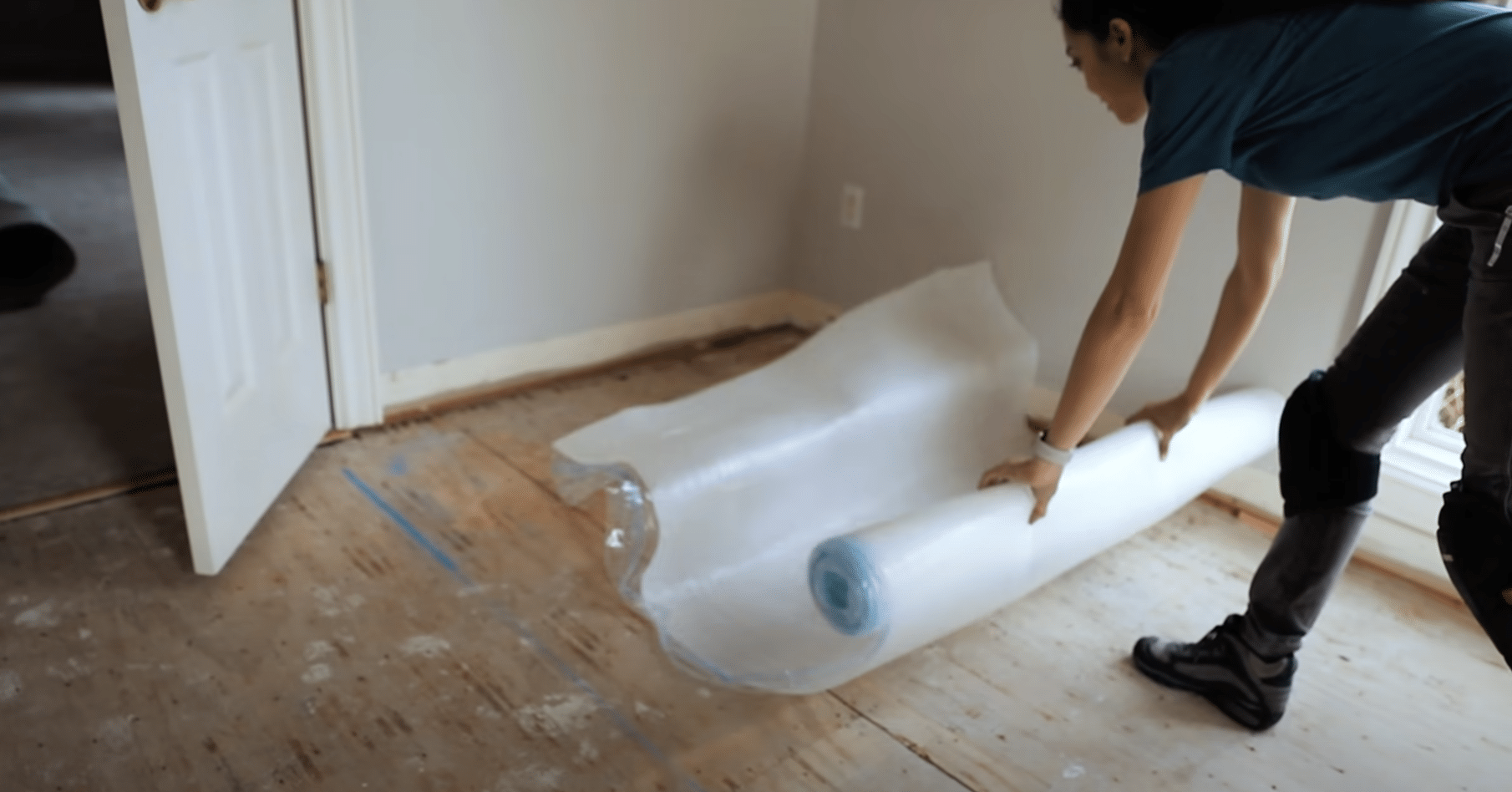
- Roll out the underlayment and secure it if necessary.
- Place shims between the wall and the first row to create an expansion gap.
Step 3: Start Installing Planks
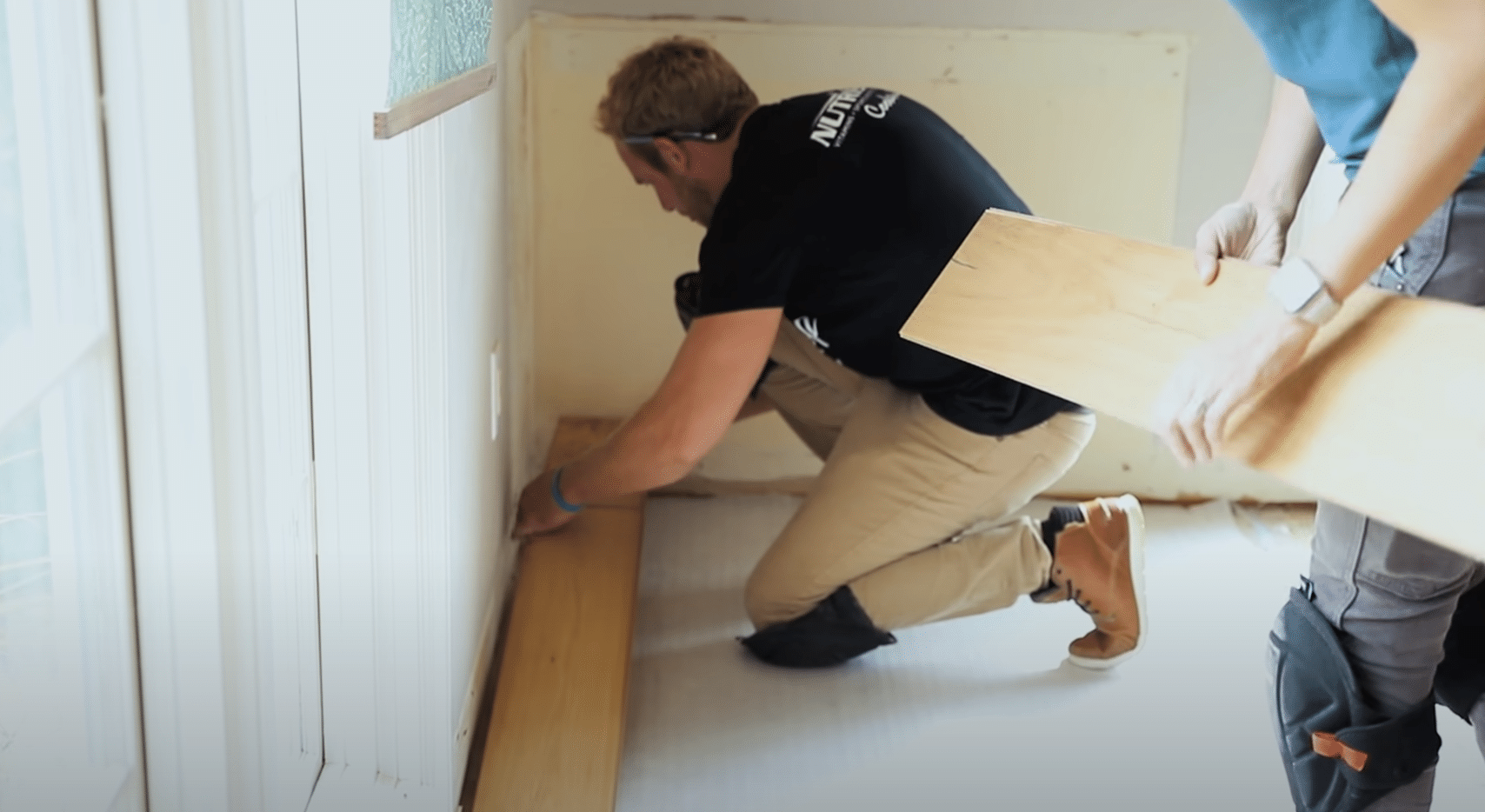
- Begin laying planks using the click lock system, starting from left to right.
- Ensure the first row is straight and secure against the shims.
Step 4: Stagger Seams and Cut Around Obstructions
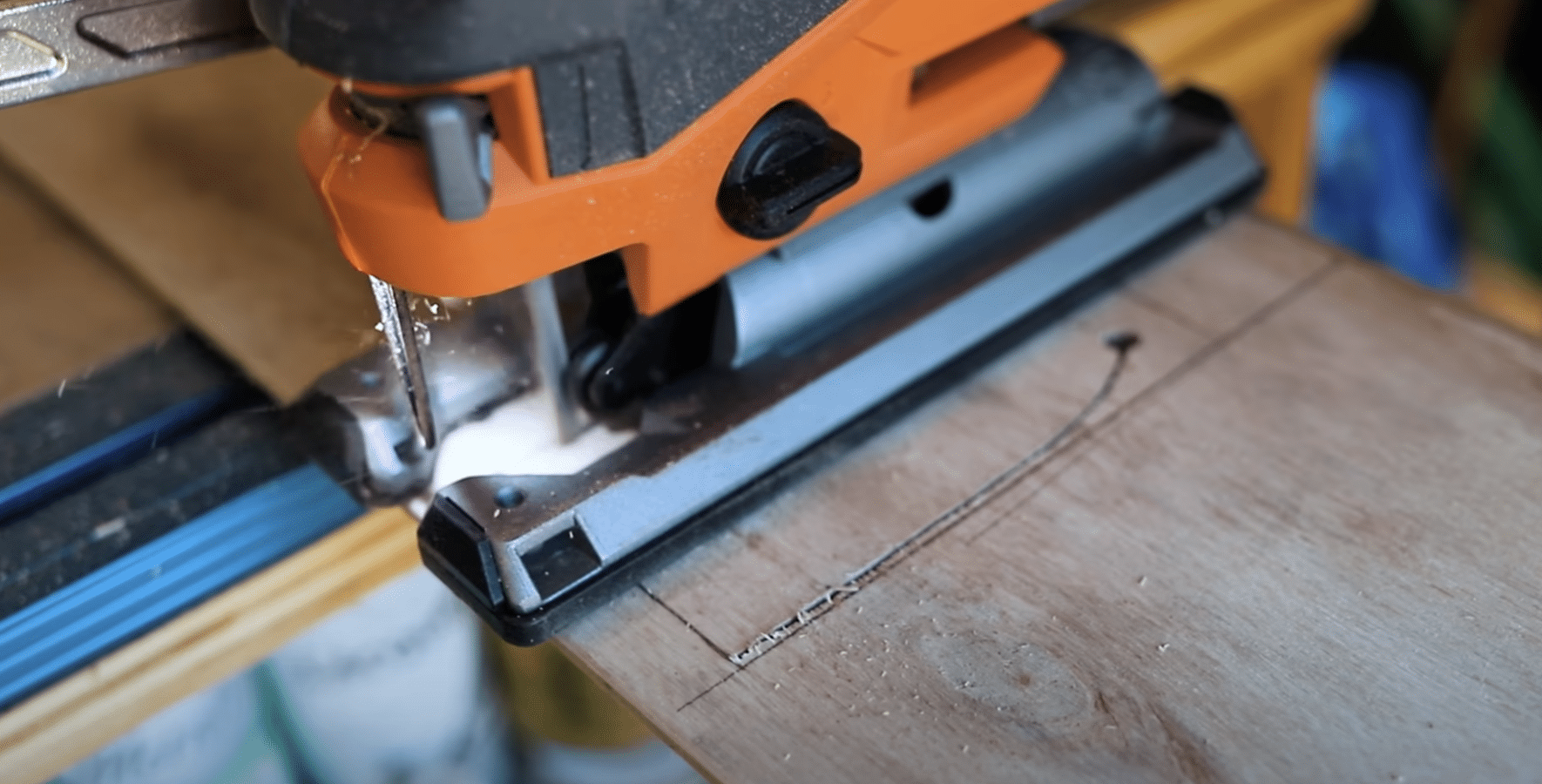
- Stagger plank seams by at least 6 inches.
- Use a jigsaw to cut around vents and door jambs as needed.
- Trim door casings with a Dremel Multi-Max to fit the planks underneath.
Step 5: Continue and Finalize
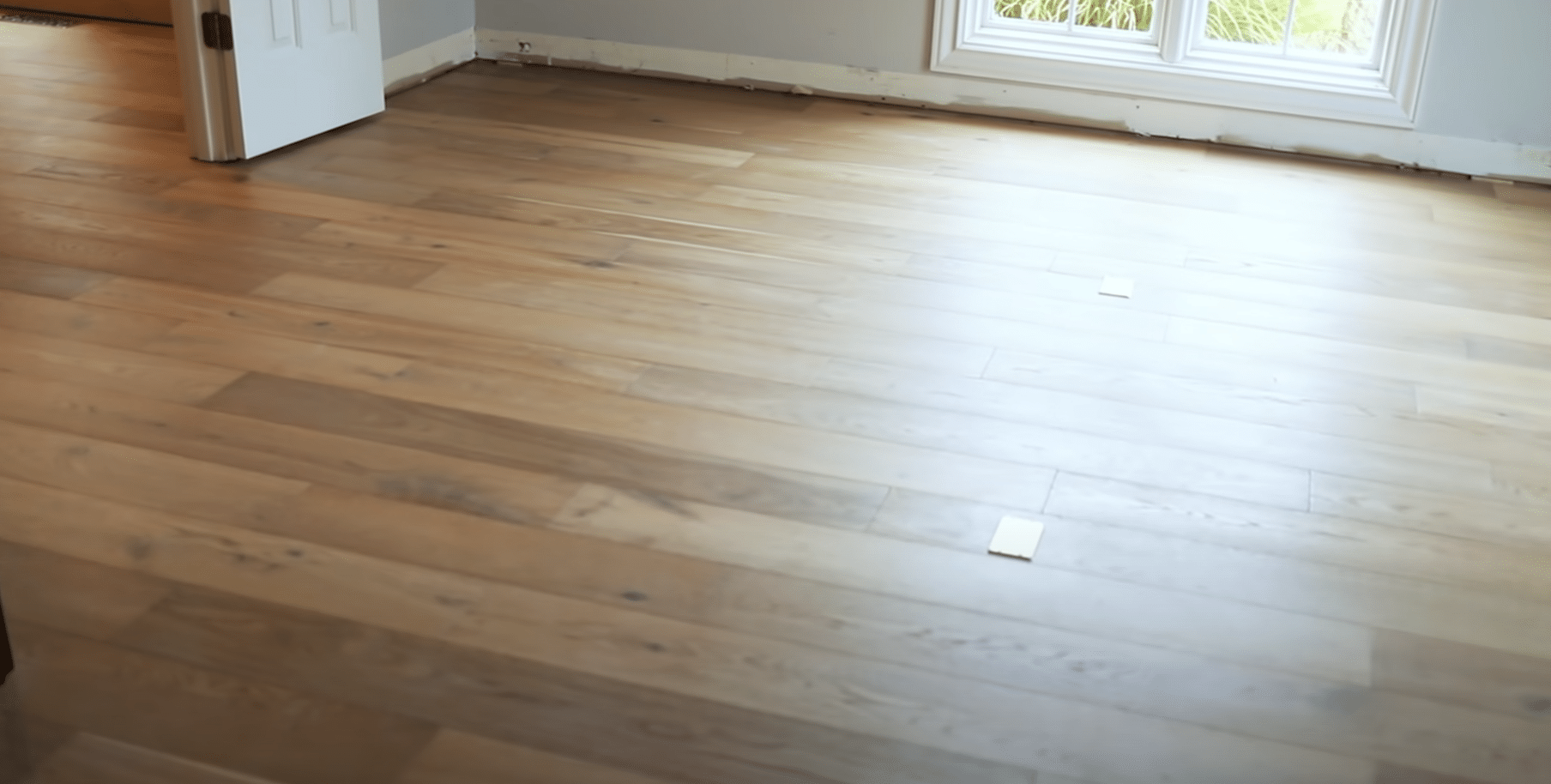
- Keep laying planks row by row, ensuring alignment and adjusting if needed.
- Finish with baseboards, trim, and any necessary transitions.
For more details, click here for a detailed full-version video.
Hardwood Floor Maintenance Guide
- Regular cleaning: Sweep or vacuum daily, and use a slightly damp mop weekly. Clean spills immediately to prevent staining or warping.
- Protect from scratches: Use felt pads under furniture legs, place mats at entrances, and trim pet nails regularly.
- Control humidity: Maintain indoor humidity between 35-55%. Use a dehumidifier in summer and a humidifier in winter if needed.
- Avoid direct sunlight: Use window coverings to prevent UV damage and discoloration. Rotate area rugs and furniture periodically.
- Refinishing: Sand and refinish every 7-10 years or as needed. For best results, consider professional refinishing.
- Use proper cleaning products: Avoid harsh chemicals or oil-based cleaners. Use products specifically designed for hardwood floors.
- Prevent water damage: Wipe up spills immediately. Avoid wet-mopping or steam cleaning.
- Regular inspections: Check for loose boards, gaps, or signs of wear. Address issues promptly to prevent further damage.
By following these maintenance tips, you can preserve the beauty and durability of your hardwood floors for years to come. Remember, different wood types and finishes may require specific care, so always consult the manufacturer’s guidelines for your flooring.
Conclusion
Choosing the right hardwood floor design can significantly enhance your home’s beauty and value.
From classic oak planks to unique end-grain wood blocks, each option offers its own charm and benefits.
When making your decision, consider your home’s style, your budget, and the specific needs of each room.
Remember, proper maintenance is key to preserving your hardwood floor’s beauty for years to come. Regular cleaning, protecting from scratches, and controlling humidity are essential steps in floor care.
We hope this guide has inspired you to explore the diverse world of hardwood flooring.
Whether you prefer a timeless look or a bold statement, there’s a perfect design waiting to transform your space.
Ready to take the next step?
Consult with a flooring professional to bring your vision to life and enjoy the timeless elegance of hardwood floors in your home.
Frequently Asked Questions
1. What is the Most Durable Hardwood Floor Design?
Straight lay with hard species like oak or maple is highly durable.
2. Does Patterned Flooring Cost More to Install?
Yes, complex patterns like herringbone may have higher installation costs due to labor intensity.
3. Can I Install Hardwood Floor Patterns Over Existing Flooring?
It’s best to remove old flooring to ensure a level surface, but some engineered hardwoods can be installed over existing floors.
4. How do I Choose Between Herringbone and Chevron Patterns?
Consider your style preference; herringbone offers a classic look, while chevron provides a more modern aesthetic.
5. Is Reclaimed Wood Flooring a Good Option?
Reclaimed wood is sustainable and offers unique character but may require more maintenance.

